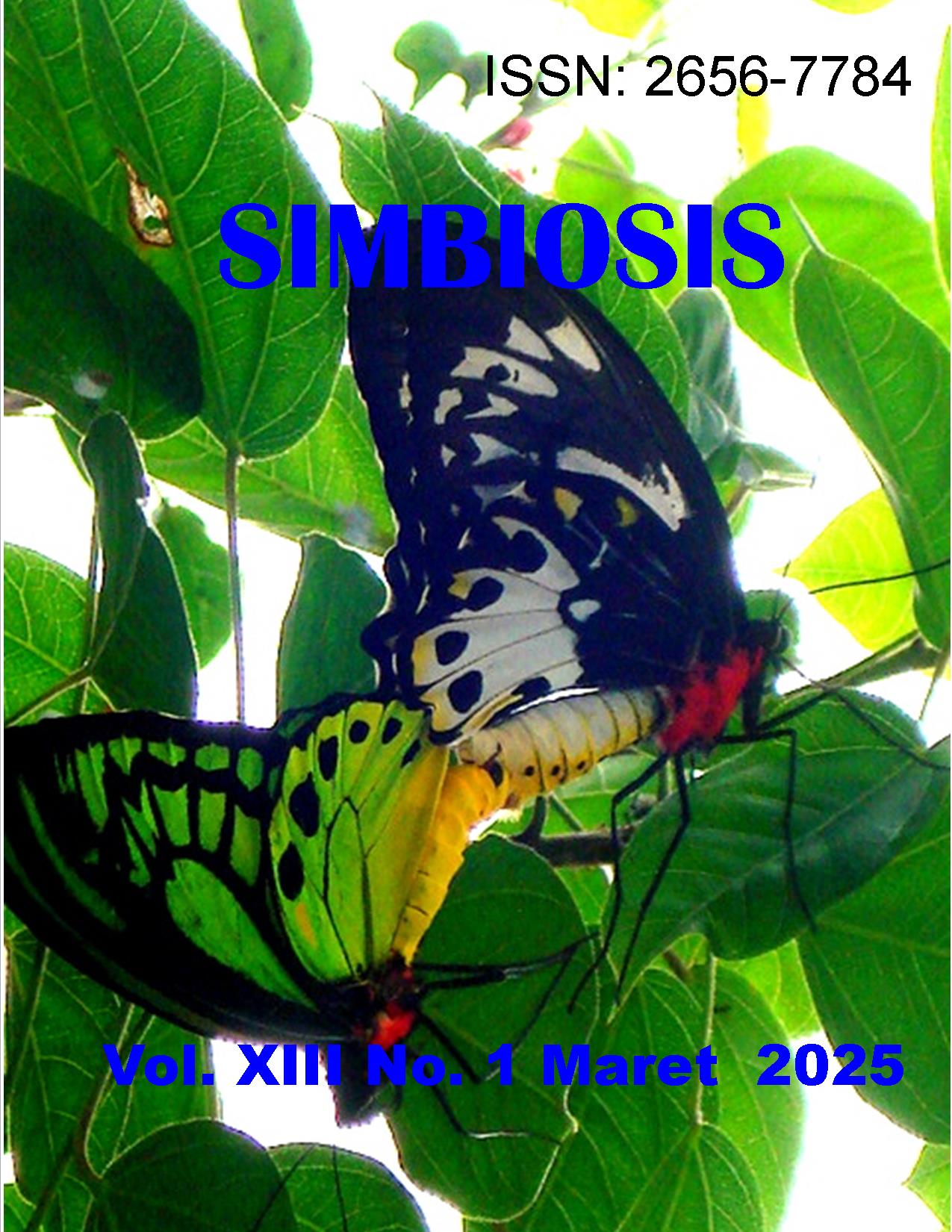POTENSI FILTRAT JAMUR Trichoderma sp. DALAM MENGHAMBAT PERTUMBUHAN Aspergillus sp. PADA PAKAN JAGUNG (Zea mays L.)
DOI:
https://doi.org/10.24843/JSIMBIOSIS.2025.v13.i01.Keywords:
Antagonist, optimum concentration, animal feed, pathogen, diffusion well.Abstract
Corn is a crop that is used as a strategic commodity for Indonesia as it can be used as animal feed. However, corn production is easily decreased due to the presence of Aspergillus sp. fungi which is able to produce aflatoxin that can affect the livestock health problems. Based on this issue, a method of controlling Aspergillus is needed by using Trichoderma sp. fungus filtrate which has antagonistic properties to pathogens. The purpose of this study was to determine the potential of Trichoderma sp. fungus in inhibiting the growth of Aspergillus sp. isolated from corn grain feed, to obtain the concentration of Trichoderma sp. filtrate that is optimal in suppressing the growth of Aspergillus sp. pathogens and to determine the comparison of positive control inhibitory power with Trichoderma sp. filtrate treatment on Aspergillus sp. pathogens. This study used a Complete Randomized Design (RAL) with dual culture methods and diffusion wells with different doses, namely 10% (v / v), 25% (v / v), 40% (v / v), 55% (v / v), and 70% (v / v). The results showed that the fungus and Trichoderma sp. filtrate had a significant effect in inhibiting the growth of Aspergillus sp. (P ≤ 0,05). The percentage of inhibition of Trichoderma sp. in inhibiting the growth of Aspergillus sp. with dual culture method was 68,61 ± 0,83%. Another study of Trichoderma sp. filtrate test on Aspergillus sp. produced the largest clear zone in the 70% treatment with a diameter of 14,81 ± 0,45 mm and the smallest was found in the 10% treatment with a diameter of 9,06 ± 0,55 mm, while in the positive control treatment a diameter of 19,53 ± 0,94 mm was obtained. The filtrate capability is expected to be a solution for related parties in improving the quality of corn grain feed.


